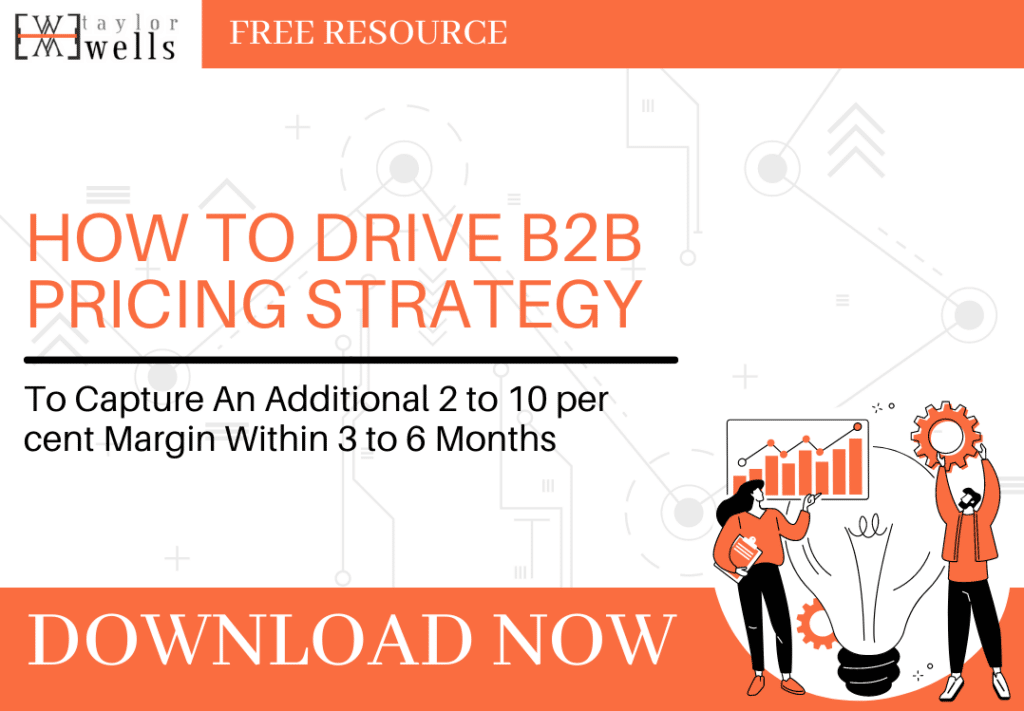
Tactical Pricing: How to Recapture your Price-conscious Customers
As competition heightens, more businesses are falling into the commoditisation trap. The shift and focus move from marketing strategies, product/technological innovations to a psychological fixation on pricing. Now, most business leaders use price as leverage to keep customers interested. While others vary their offerings with basic to upgraded and premium versions. But how can pricing managers retain and ensure that they satisfy their price-conscious customers? Today, we talk about tactical pricing.
Customers can feel overwhelmed with the choices available. So, most of them will choose based on their key value drivers. Others will base their decisions on price. Hence, in some markets, the competition becomes based on price points.
The problem with excessive discounting and poor pricing decisions is it chips away margins and revenue in the long term. And as more customers pay more attention to pricing, you, as a business, miss out on platforms for communicating your brand image and value creation.
To customers, numbers become more important than marketing. Sometimes, it’s even at the expense of the quality or value they’re receiving. This ultimately leads you to disregard opportunities to justify your price and value proposition.
To highlight your product and brand relevance, customers must be reminded of their value drivers other than pricing. Capturing their attention, however, seems more complicated with greater implications that businesses can take advantage of.
In this article, we discuss what tactical pricing is and how you can shift your customer’s focus on price by using exactly that to your advantage. How can you let them investigate your prices and why your services or brand stand out?
At Taylor Wells Advisory, we believe that this is achievable by starting with what they focus on so much. Then reframe it in ways that will make them even more curious. We argue that with the correct steps, there are ways to recapture buyers who are unresponsive to marketing tactics.
Pricing managers have to look beyond price points as they tend to overlook their pricing structure. That’s aside from research and marketing methods, data analysis, interviews, and surveys.
Some businesses aimlessly set their prices so high to communicate “high-quality” and innovative features. But they fail to incorporate the details into their marketing efforts in thought-provoking ways.
So, how can you improve the dialogue between you and your customers? How can you transform it into more than just a transaction of items, numbers, and prices?
Below are four tactical pricing steps that can differentiate your value proposition from rivals:
Value-based Tactical Pricing Structure
Shifting the core of the product/service from its pricing to its value not only helps you differentiate yourself from the market. It also addresses the concerns of price-sensitive customers.
1. An Australian tire company priced its products according to mileage and how long they will likely last. This decision was to address a customer base who often chose the basic or upgraded versions of the product/services instead of the premium option.
It allowed them to compare prices from a new perspective in terms of technology and engineering innovation. Rather than just numbers or which price is higher and lower.
2. In the case of airline engine suppliers, they charge on an hourly consumption basis. Why? Value-based pricing sends out a consistent message that a brand cares about its reputation and relationship with customers.
3. Redefining the pricing structure does wonders just like it did for an Australian car insurance company. Instead of the usual annual premium based on a car owner’s risk analysis, the company removed annual premiums.
It based its pricing on mileage and innovated with tracking devices to keep an eye on its customers’ driving behaviours. This made it easier for them to quote a higher price for offensive drivers.
Not only was this an eye-opener for customers in terms of price justification. But they were more conscious of their driving habits, reducing car accidents.
This also gave the company more opportunities to increase competition while capturing value and revenue. As a result, it put them at an advantage as more insurance companies implemented the same personalised pricing.
Set a High Price Wisely
Product differentiation is the ability to demonstrate the value and features of your services while knowing the depth of the innovation process.
One way to do this is by setting a high price for a new product/offering that sparks curiosity. This is common in new entrants in the market because it’s more difficult to raise prices when you’ve started at a much lower rate. This is otherwise known as the skimming method.
Many brands have succeeded in this tactic when breaking into the market like those in the beauty and skincare industry. They attract and capture those customers who are willing to pay for the highest price.
Why? Natural and responsible sourcing or manufacturing of beauty products (like those against animal testing) appealed to customers who were more conscious about their ways of consumption.
But if you choose to implement this tactic, the periodical discount rate shouldn’t often be too drastic. Why? It’s because it may push customers to switch to competitors once regular prices are back.
A reasonable premium pricing is typically ideal when testing out new products in an inelastic demand. In other words, customers will still buy or consume the same amount, regardless of the high price because it is a necessity (e.g. food or gasoline industry.)
On the other hand, this isn’t the best idea to implement in a congested market where businesses will likely compete on prices and engage in a price war.
Likewise, if you want to do this properly, a high price should be supported by the right marketing campaigns and innovative solutions like highlighting added features. Otherwise, customers won’t see the reasoning behind the high price.
Price Partitioning vs. Package Pricing – Tactical Pricing
Charging separately for components helps customers see the benefits behind the range of your offerings.
The TV is a great example. You buy a TV set that comes with remote control. But the TV has no use without cable channels or movie streaming services connected to the internet.
We also see this in the airline industry where you can pay for extra luggage, more legroom, or premium food service. But interestingly, studies show that people respond more to price partitioning (plus emphasising the qualities) than packaged pricing.
Why? Showcasing other items or benefits as smaller charges motivate consumers to investigate and choose what they feel or think is best for them.
On the downside, this can agitate other customers if a company isn’t being direct about the overall costs. Or if core services are overcharged versus its complimentary services.
In other cases, there are businesses that charge a higher price for a packaged offering where everything is included instead of an itemised bill.
Of course, a bad customer experience will likely encourage them to switch to other brands. And it’s all because they don’t want to repeat the transaction.
So, to sum it up, you need to find out what your competitive advantages are. Then set a higher price for that rather than overcharging for basic or standard services.
Uniform Price Points – Tactical Pricing
A product range that is priced the same will stir up some curiosity. Especially for a customer base that is price-conscious. They will be motivated to probe into the best deal that they can get based on their needs.
If takeout food contains out-of-season ingredients, then the price will be based on its overall production costs plus a markup.
But recall the time that Steve Jobs decided to price 99c for any of its Apple iTunes tracks. He was heavily criticised for failing to segment his customer base. They thought he was missing out by not offering price differentiation and capturing customer surplus.
But surprisingly, because customers were offered an equal price point, 31% of them purchased more songs on a monthly basis.
This method shifted the focus from price fixation into the customer’s desire to consume services, ultimately altering buyer decisions or patterns. It is most effective in markets that are highly competitive based on price. This also breaks the competition while accentuating the features that put you at a competitive advantage.
〉〉〉 Get Your FREE Pricing Audit 〉〉〉
Bottomline
As a business, you can’t completely eliminate price-conscious consumers. In fact, the more you have a wider target market for an offering that appeals to a variety of consumer tastes, the more opportunities you have for capturing profit/revenue.
The secret is to vary the presentation of your prices that makes customers ask if they need the benefit or not. Because in a buyer’s decision, there’s always a higher price range that they’re willing to pay for than originally intended or expected.
The goal is to get them to spend more time investigating a product/service. This hones in the benefits and features that they didn’t think they need. It should also prompt them to look into the reasoning behind the price.
This shifts buyer behaviour, encouraging them to explore the value that they’re being offered – along with the choices they think are best for them.
For a comprehensive view on maximising growth in your company,
Are you a business in need of help to align your pricing strategy, people and operations to deliver an immediate impact on profit?
If so, please call (+61) 2 9000 1115.
You can also email us at team@taylorwells.com.au if you have any further questions.
Make your pricing world class!
Related Posts
Leave a Reply Cancel reply
Categories
- marketing strategy (26)
- Organisational Design (14)
- Podcast (114)
- Pricing Capability (87)
- Pricing Career Advice (10)
- Pricing Recruitment (19)
- Pricing Strategy (287)
- Pricing Team Skills (13)
- Pricing Teams & Culture (24)
- Pricing Transformation (47)
- Revenue Model (25)
- Sales Effectiveness (27)
- Talent Management (7)
- Technical Pricing Skills (35)






